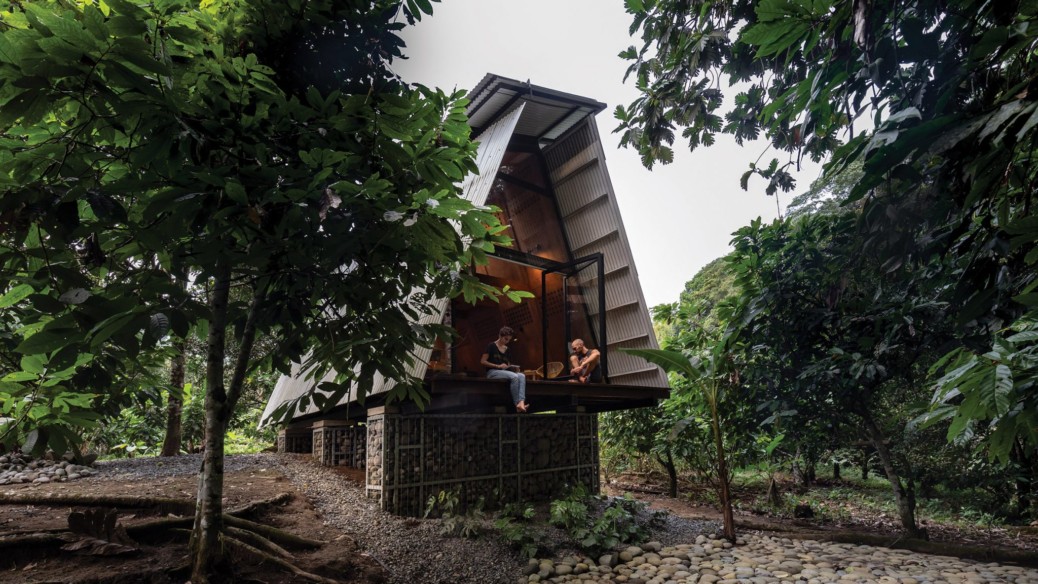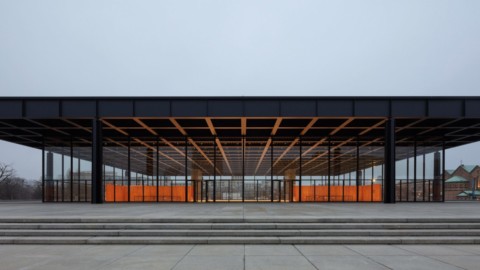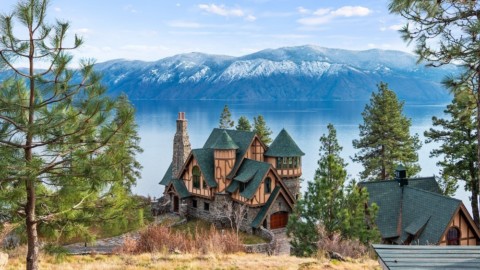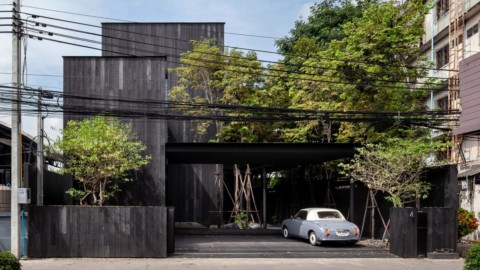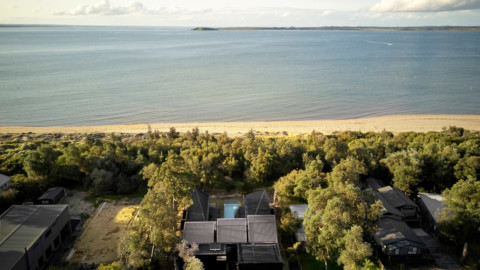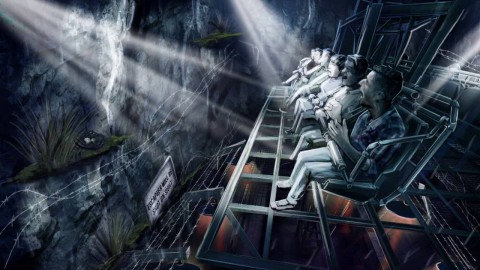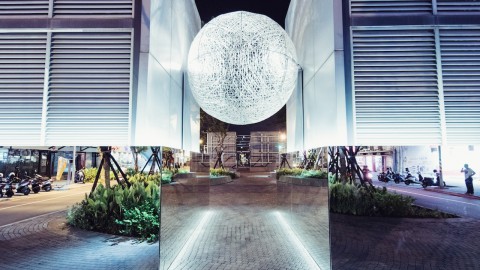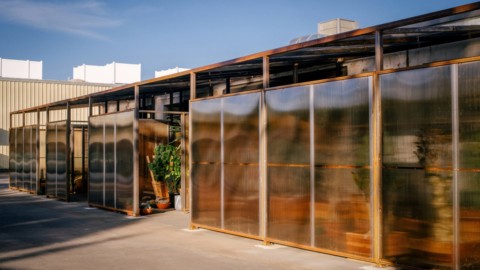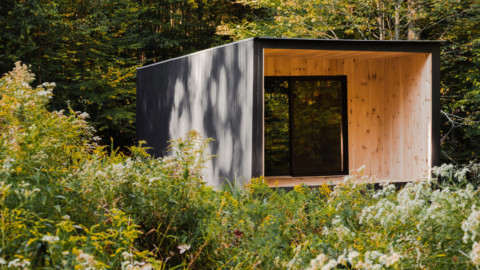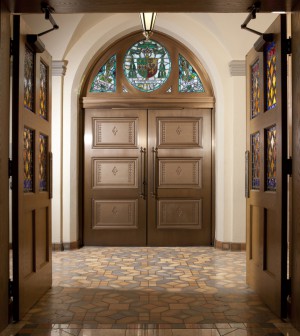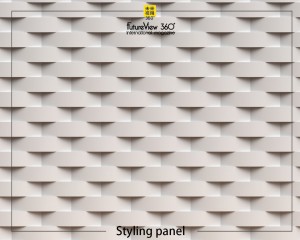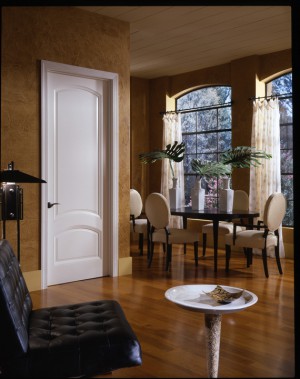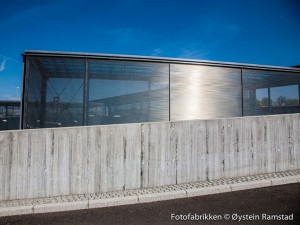Tetra Pak cladding shelters the prefabricated plywood structure of the Huaira cabin, which architects Diana Salvador and Javier Mera have built for themselves beside a river in Puerto Quito, Ecuador.
Hidden amongst dense vegetation on an orange, banana and cocoa farm, the rural cabin was designed by Salvador and Mera as a quiet retreat that would allow them to reconnect with nature.
Its structure and form are deliberately simple, recyclable and adaptable, ensuring it has a low environmental impact and retains focus on its natural setting.
利樂包層覆蓋了Huaira機艙的預製膠合板結構,建築師戴安娜·薩爾瓦多(Diana Salvador)和哈維爾·梅拉(Javier Mera)親自為厄瓜多爾的基多建造了一條河。
鄉村小屋隱藏在橘子,香蕉和可可農場的茂密植被中,由薩爾瓦多和梅拉設計,是一個安靜的隱居處,可讓他們與自然重新建立聯繫。
它的結構和形式特意簡單,可回收利用和適應性強,可確保對環境的影響小,並始終專注於自然環境。
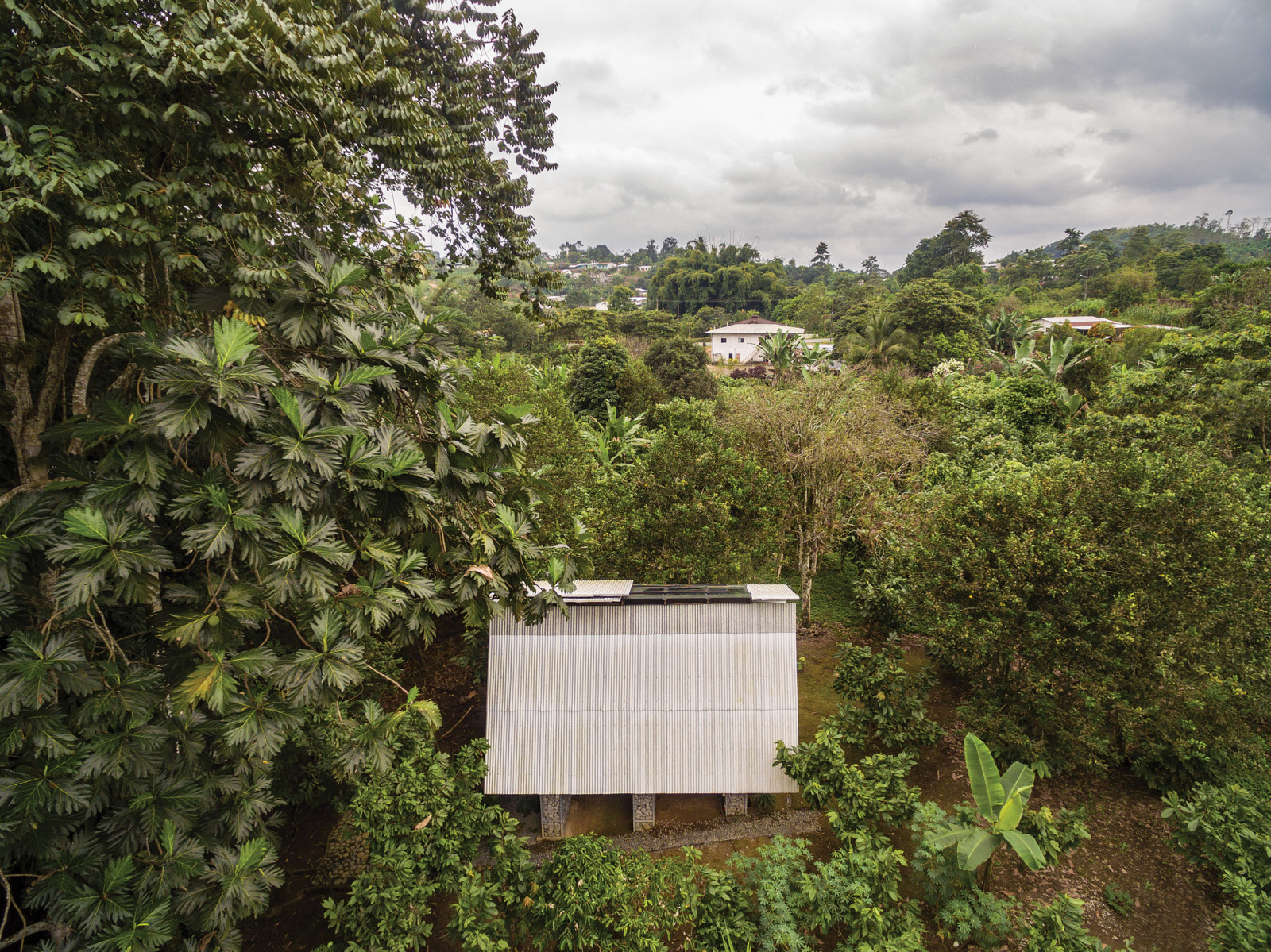
“The mission, a specific need, a refuge outside the city, with contact with the essence of nature,” Salvador told Dezeen.
“The purpose was to generate a peaceful place that offers continuous experimentation and stimulates a connection with the natural environment. It sounds a little bit romantic, but it is really sad it has been forgotten, just a few people know how beneficial nature can be.”
薩爾瓦多對德澤恩說:“任務是一項特殊需要,是在城市外的避難所,與大自然的本質息息相關。”
“這樣做的目的是建立一個可以進行連續實驗並激發與自然環境的聯繫的和平場所。聽起來有些浪漫,但令人難過的是它被人們遺忘了,只有少數人知道自然有多有益。 ”
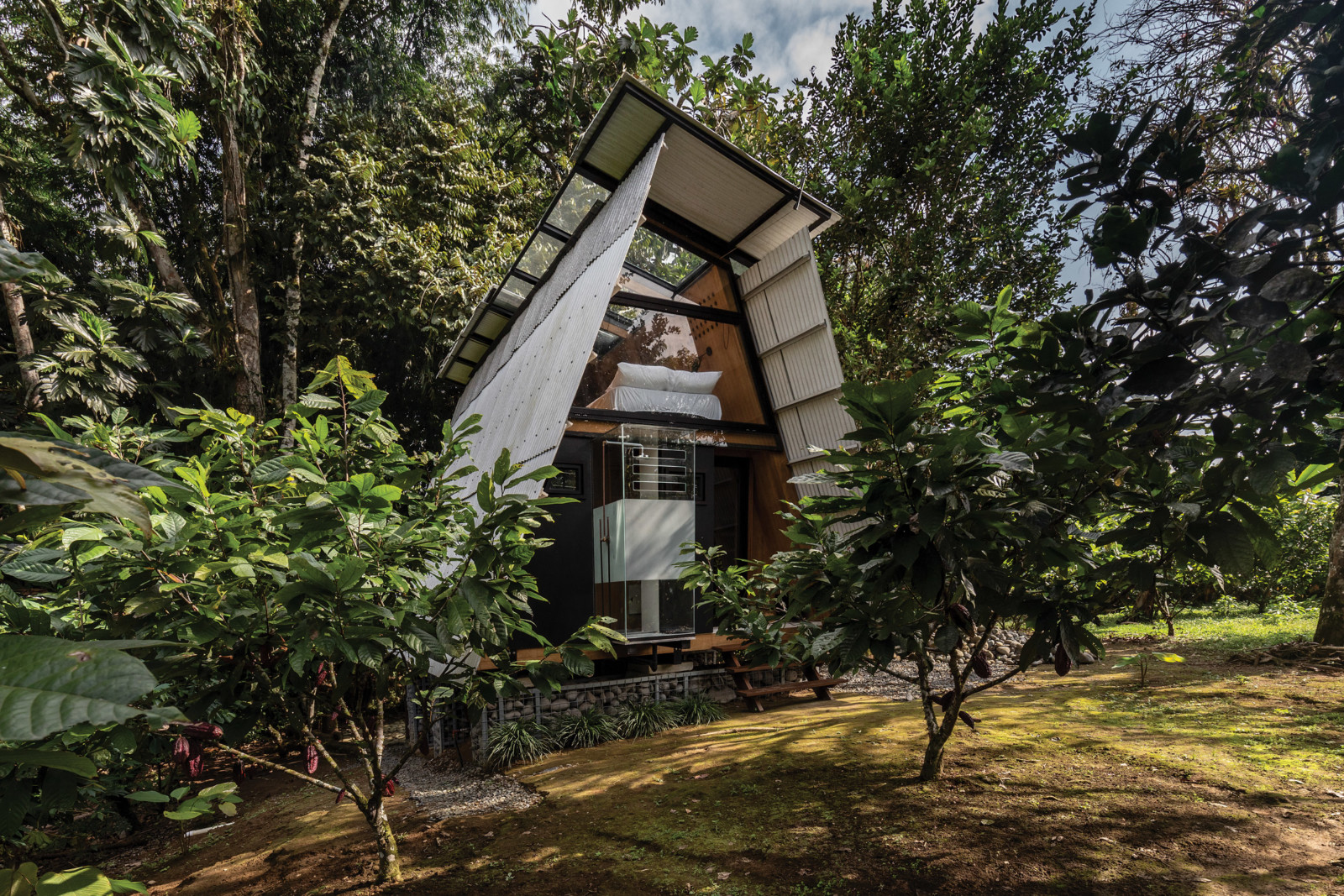
Huaira measures 40 square metres and has a distinctive pitched form containing two floors of living space. This includes a bathroom, a sitting room and a kitchen, and a small bedroom accessed by an alternating tread stair.
The bathroom is positioned at the front of the dwelling and features a shower encased by a glass box that projects from the cabin’s facade, immersing users in nature as they bathe.
瓦伊拉(Huaira)佔地40平方米,具有獨特的傾斜形式,包含兩層居住空間。 其中包括一間浴室,一間客廳和一間廚房,以及一間小臥室,可通過交替的踏步樓梯進入。
浴室位於住宅的前部,設有一個淋浴間,該淋浴間由從機艙正面凸出的玻璃盒子包裹著,使用戶在沐浴時沉浸在自然中。
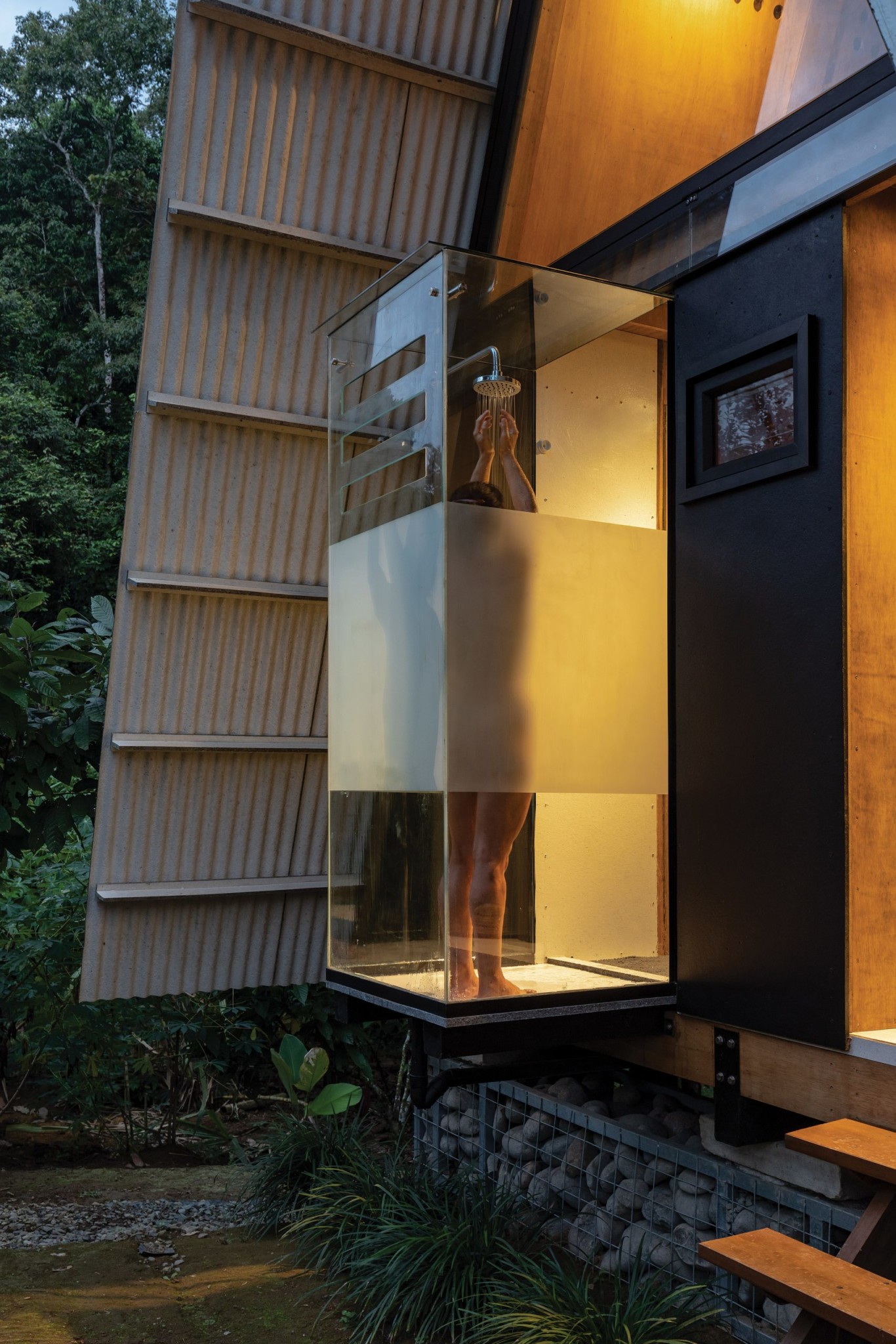
The cabin’s small size provides ample space for the family to stay there comfortably once a week while ensuring it can also be used as a holiday getaway for tourists on the other days.
“Our life is simple, and that is how the house is solved,” added Salvador. “We use it to be at peace and for that purpose, it contains just necessary minimum areas.”
The main structure is made from prefabricated plywood, elevated on stone-filled gabions. These gabions protect the house from heavy rain or the flooding of the adjacent river.
It is sealed with glass windows and a roof and cladding made from Tetra Pak in the form of corrugated sheets.
小屋的小巧尺寸為家庭提供了足夠的空間,讓他們每周舒適地呆在那裡一次,同時確保它也可以在其他日子用作遊客的度假勝地。
薩爾瓦多說:“我們的生活很簡單,這就是房子的解決方法。” “我們使用它是為了和平,為此,它只包含必要的最小區域。”
主體結構由預製的膠合板製成,並在裝滿石塊的石籠上抬高。 這些石籠網可以保護房屋免受大雨或附近河流的洪水侵襲。
它由玻璃窗,由利樂(Tetra Pak)製成的瓦楞板形式的屋頂和覆層密封。
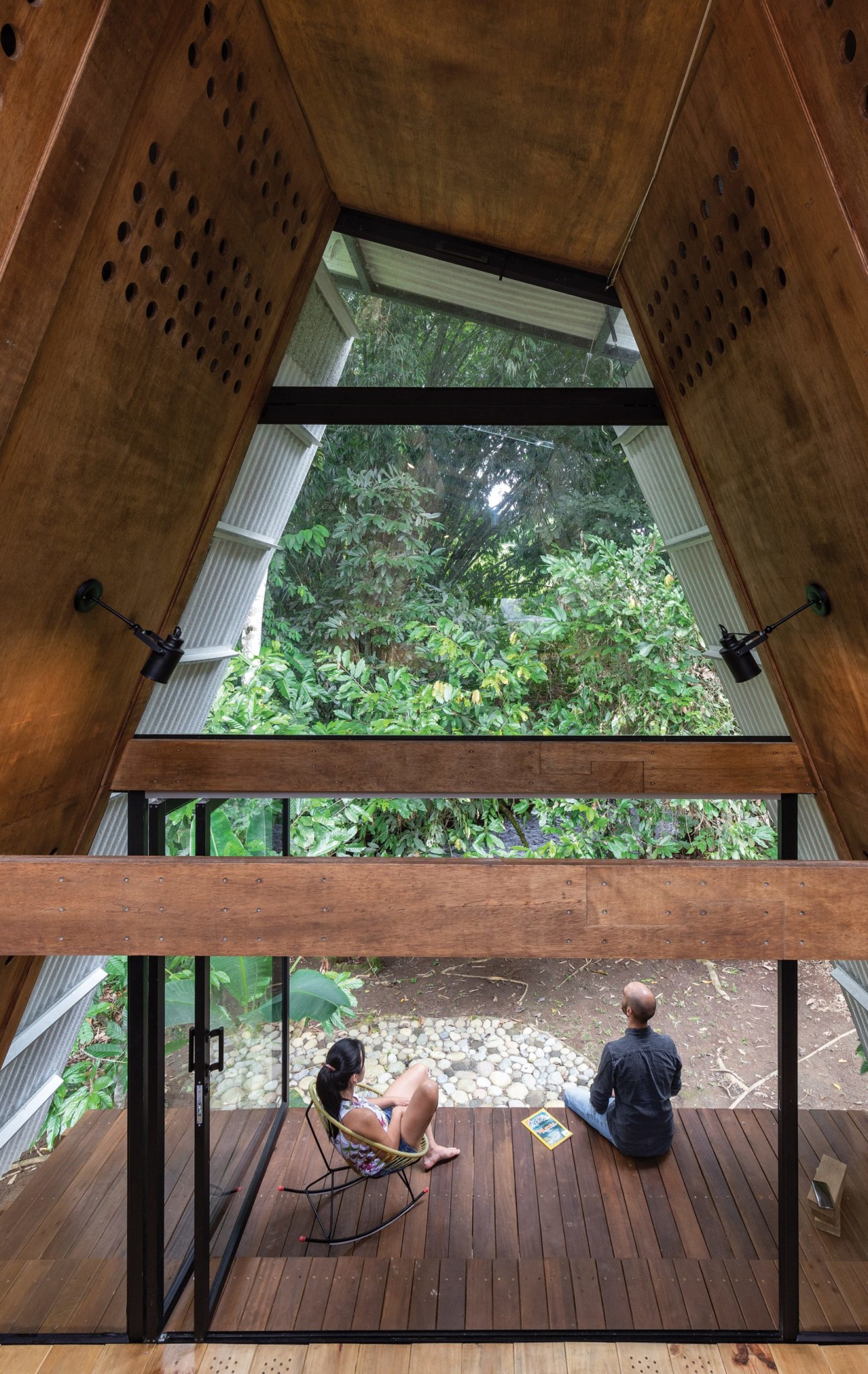
The materials used to build the cabin were all chosen for their low-carbon footprint and to allow the dwelling to be completely recycled or reused at the end of its useful life.
Plywood was used for the main structure in recognition of its sequestered carbon, which the duo hopes will help offset the minimal carbon emissions of the building over its life.
Sequestered carbon is the amount of carbon dioxide that a tree removes from the atmosphere as it grows and subsequently stores as carbon.
所有用於建造機艙的材料均因其低碳足跡而選擇,並允許在其使用壽命結束時將其完全回收或再利用。
膠合板被用於主要結構,以表彰其固存的碳,兩人希望這將有助於抵消建築物在其生命週期內的最低碳排放量。
固存的碳是樹木生長時從大氣中移除並隨後以碳形式存儲的二氧化碳量。
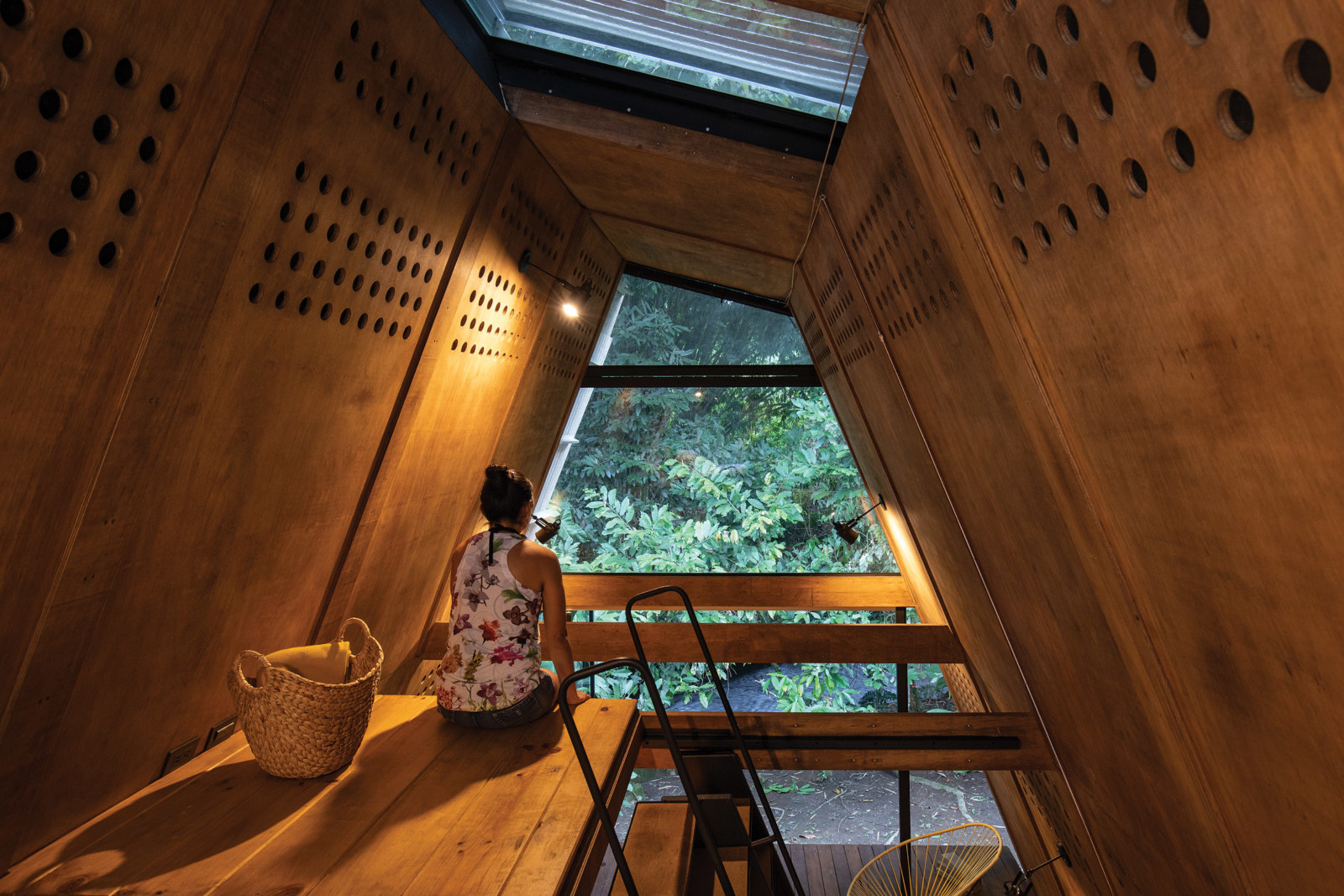
In order to limit the carbon consumption of Huaira when in use, Salvador and Mera designed its shell to facilitate natural ventilation – eliminating the need for air conditioning. This includes perforations in the walls that enable cross ventilation.
The roof also features a retractable layer that can be used to cover a skylight and limit the amount of direct sunlight reaching the interiors and in turn help to cool the cabin.
為了限制使用Huaira時的碳消耗,薩爾瓦多和梅拉設計了其外殼,以促進自然通風-無需空調。 這包括壁上的穿孔,從而可以進行交叉通風。
車頂還設有可伸縮層,可用於遮蓋天窗並限制直射陽光進入室內的量,進而有助於冷卻機艙。
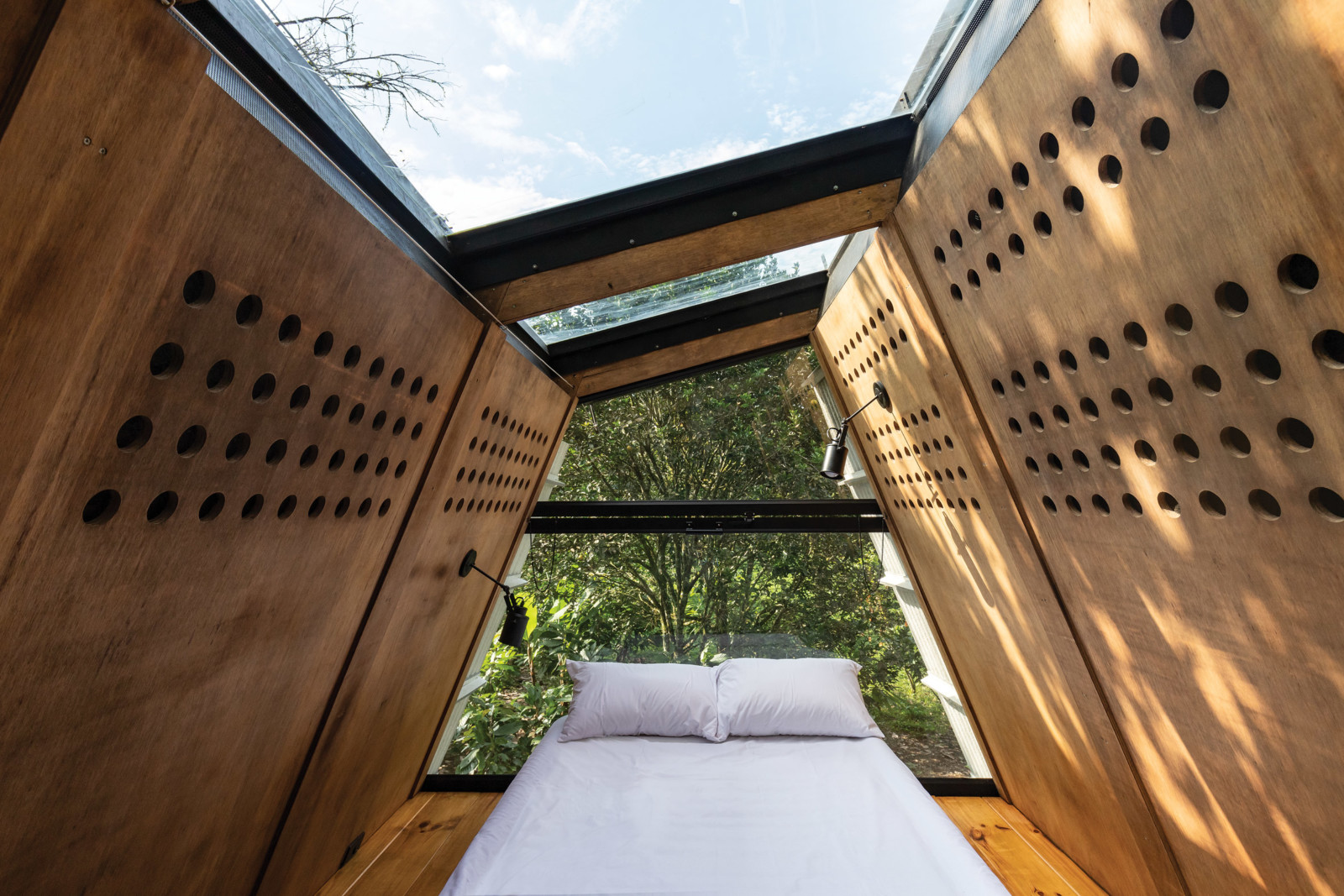
Architecture student David Guambo also recently completed a wooden cabin in rural Ecuador, which is elevated on stilts and used as his own studio.
In Quito, Ecuadorian studio El Sindicato Arquitectura built a 12-square-metre parasitic structure atop an existing building. Despite its small footprint, it has a bathroom, kitchen, bed, storage and space for eating, working and socialising, all within its 12-square-metre footprint.
Photography is by JAG Studio.
建築專業的學生大衛·瓜姆博(David Guambo)最近還在厄瓜多爾鄉村完成了一個木製小屋,該小屋被高蹺抬起,並用作自己的工作室。
在基多,厄瓜多爾工作室El Sindicato Arquitectura在現有建築物的頂部建造了一個12平方米的寄生結構。 儘管佔地面積很小,但它的浴室,廚房,床,儲物空間以及進餐,工作和社交的空間都在其12平方米的佔地面積內。
攝影是由JAG Studio完成的。
FROM:https://www.dezeen.com/2020/12/07/prefabricated-huaira-cabin-diana-salvador-javier-mera/

